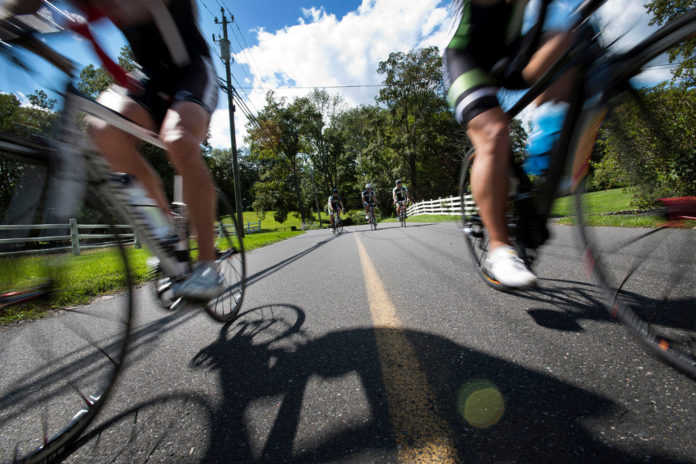
With a large, auto-less student population, relatively gridlock-free roads and new or improved bicycle paths extending like spokes to nearly every corner of the state, Providence has all the makings of a cycle-centric city.
But while bicycle ridership has climbed over the last 10 years, the city’s internal cycling infrastructure has lagged behind other cities.
New bike lanes and navigational arrows connecting the major bike paths were painted on city streets last summer, but bicycle advocates say they do only so much, are often difficult to follow or confine riders to close proximity with hurried motorists in others.
“The existing city bicycle plan is centered around major streets and, seen through a cyclist’s eyes, it is auto-centric,” said Matthew Moritz, president of the Rhode Island Bicycle Coalition. “It uses all the roads a car would use.”
That existing bicycle plan was created a decade ago and doesn’t take into account the recent surge in ridership or the latest in transportation planning, bicycle advocates say.
City, and now state, planners agree.
This past winter Providence was awarded a $36,000 state grant to hire a consultant who will plan and put together recommendations for a new bicycle plan.
“There has been a strong increase in the bike culture in Providence and we definitely see bike infrastructure as more of a need now than we have in the past,” said Melanie Army, principal planner with the city.
Along with greater ridership here and across the country, the study coincides with planning for the reconnection of the street grid on the Interstate 195 lands, which will need to in some way account for bicycles and tie into current paths and parks along the Providence River.
Of course, pro-bicycling public works projects are not always welcomed enthusiastically by drivers.
In New York City, for example, the creation of hundreds of new bike lanes on city streets produced a backlash from motorists who blame them for increasing traffic.
Even some cyclists question the wisdom of bicycle lanes when they are ticketed for riding outside of them.
For Providence bicycle advocates such as Moritz, these issues point to the need for any plan to prioritize getting riders off busy streets where possible, either off the road entirely or onto routes that take advantage of side streets.
Specifically, Moritz said he hopes the new plan will look at an off-street connection between the Elmwood neighborhood in South Providence and Roger Williams Park on the other side of Interstate 95.
Other important connections include better linking the Blackstone River Bikeway in Cumberland with the East Bay Bike Path in East Providence by building more off-street and efficient routes through Central Falls, Pawtucket and the East Side of Providence.
On the west side of town, improvements are sought to the connections between downtown, the Woonasquatucket River Bikeway and the Washington Secondary Bike Path.
Aside from growing the network of off-street routes, Moritz said he would like to see more of an emphasis on family-friendly bike routes within the new city plan, as opposed to a focus entirely on commuting.
The goal of encouraging more young people to use bicycles in the city is shared by Richard Durishin, founder of the Providence-based U.S. Open Cycling Foundation, a cycling advocacy and education group.
Durishin said the new plan should work to improve striping and “sharrowing” (bike symbols with arrows on the sides of streets) to prevent confusion about who should be where.
In addition to the physical improvements, Durishin said he would like to see some resources put toward bicycle education for cyclists and motorists in the new plan.
“We know car drivers get nervous when they are driving next to bicycles and we know that 50-60 percent of accidents are caused when cyclists do something they shouldn’t,” Durishin said, citing the confusion that often occurs at four-way stop signs.
Last spring, the city completed a feasibility study on creating a bike-share program like the ones that have been started in other cities around the country, most recently Boston.
The study estimated that a system would cost approximately $1.5 million up front with annual operating costs of up to $500,000. So far that cost has been considered too expensive for the cash-strapped city.
Army said city planners intend to seek bids in April for a consultant to do the study, which could take up to one year to complete. •












